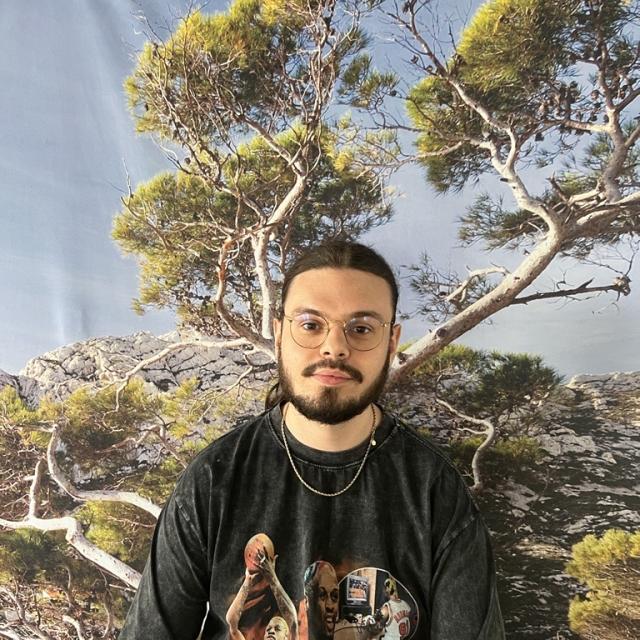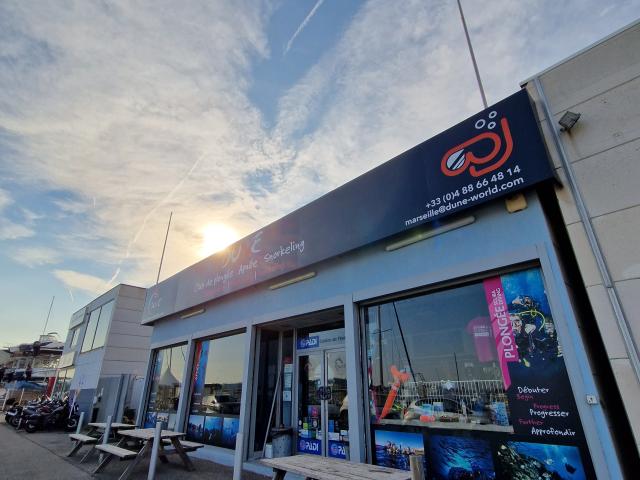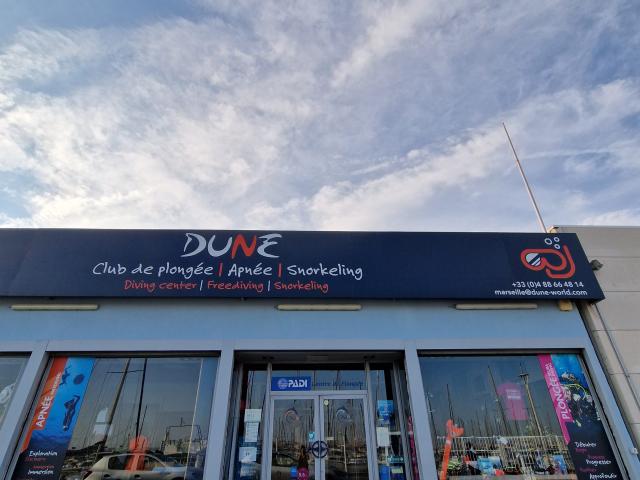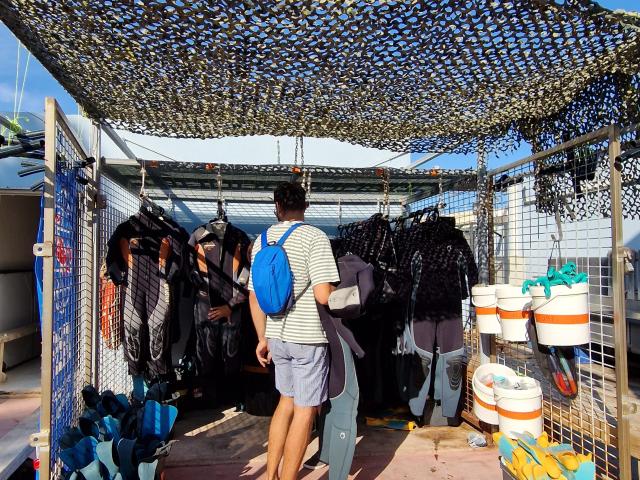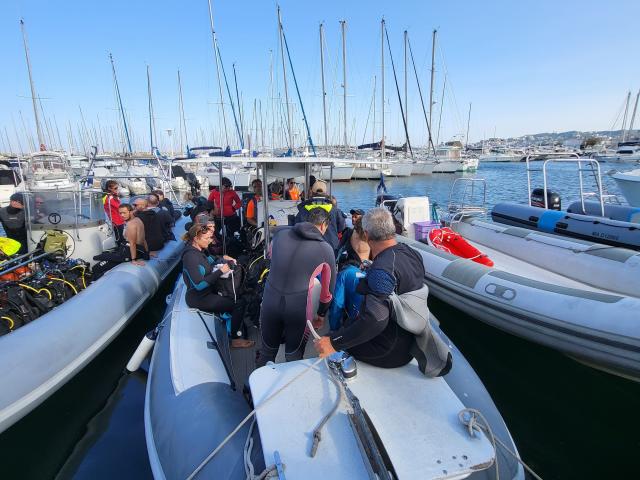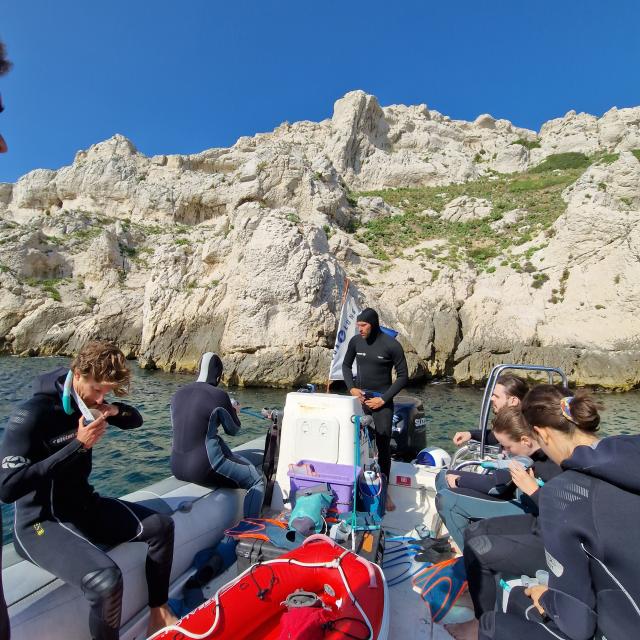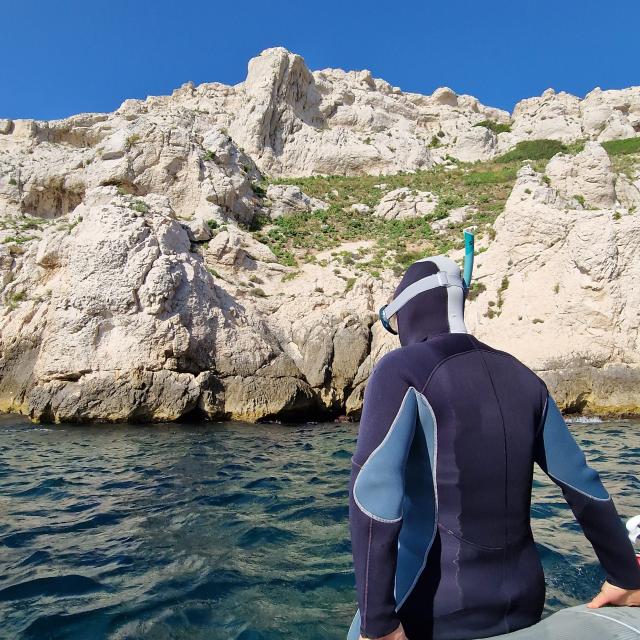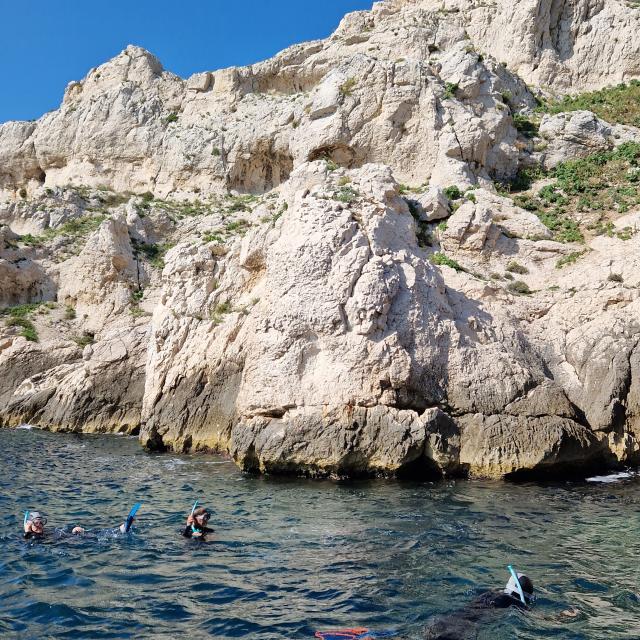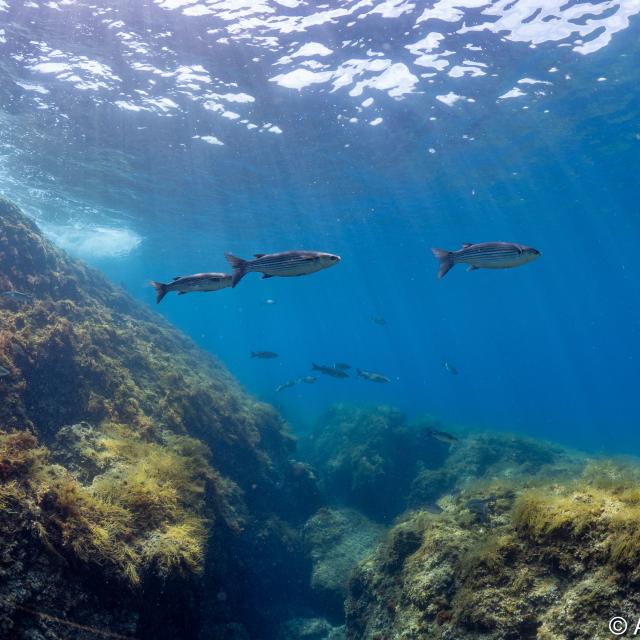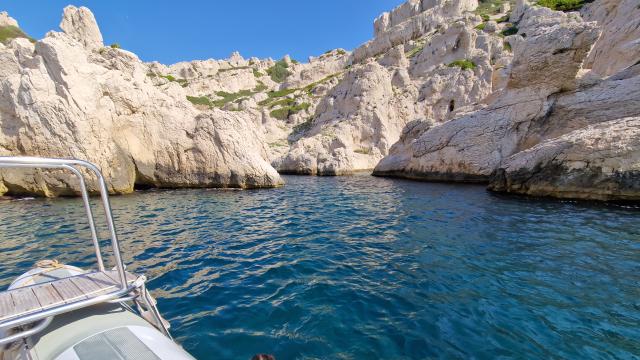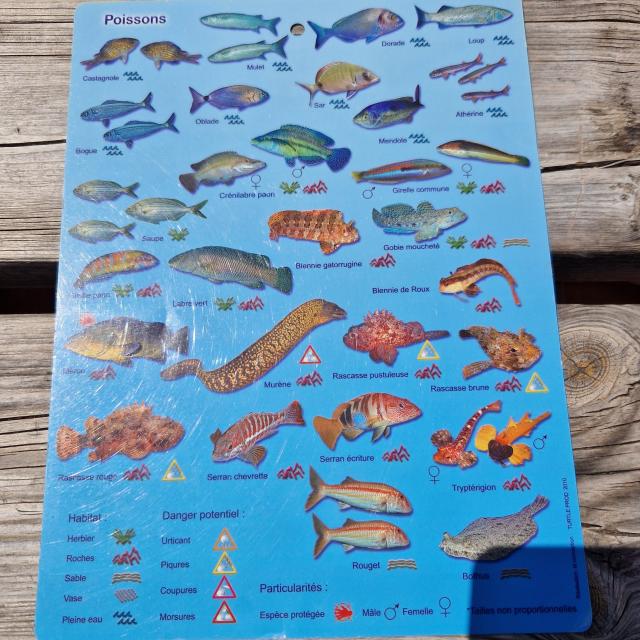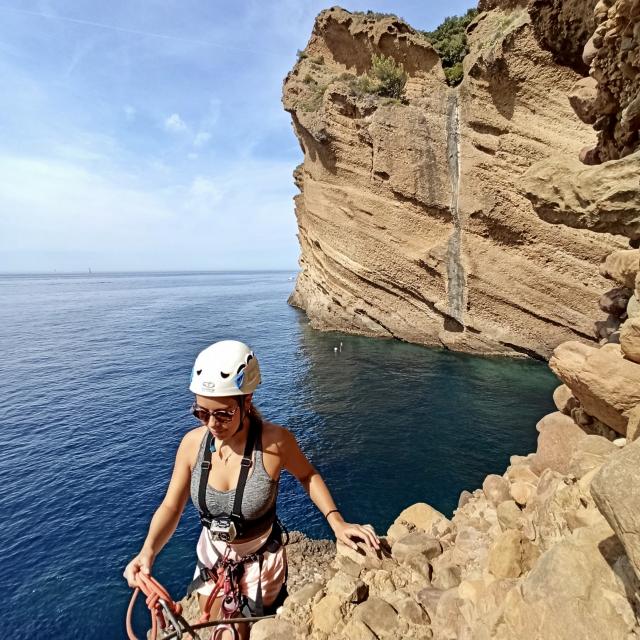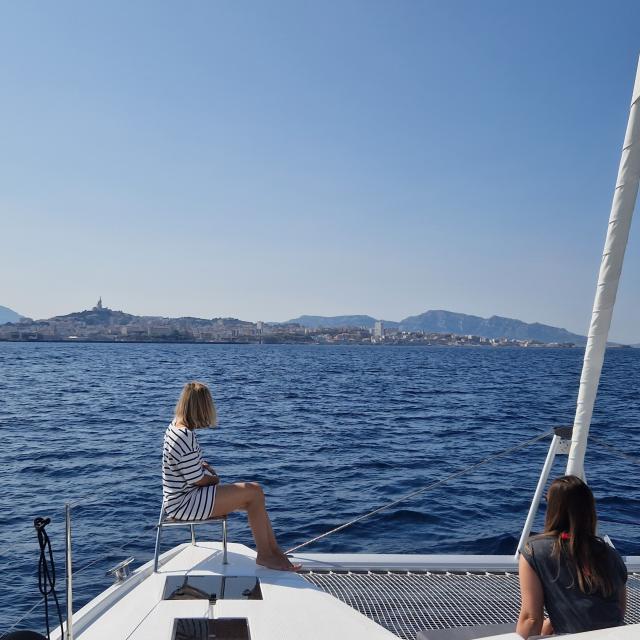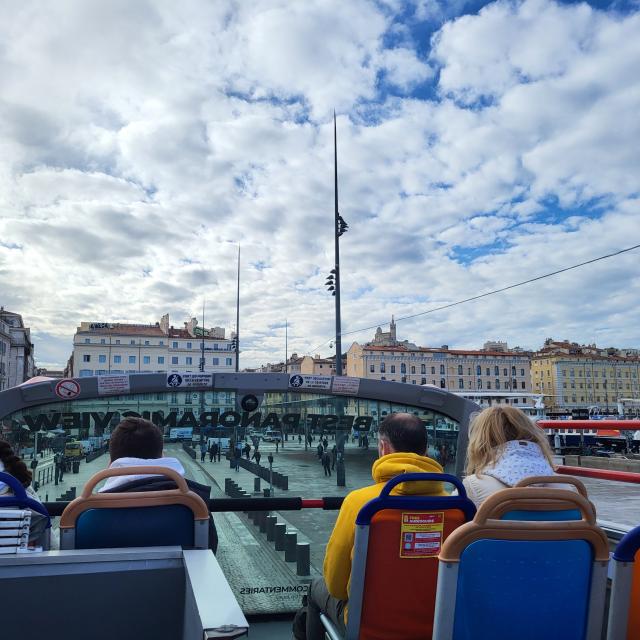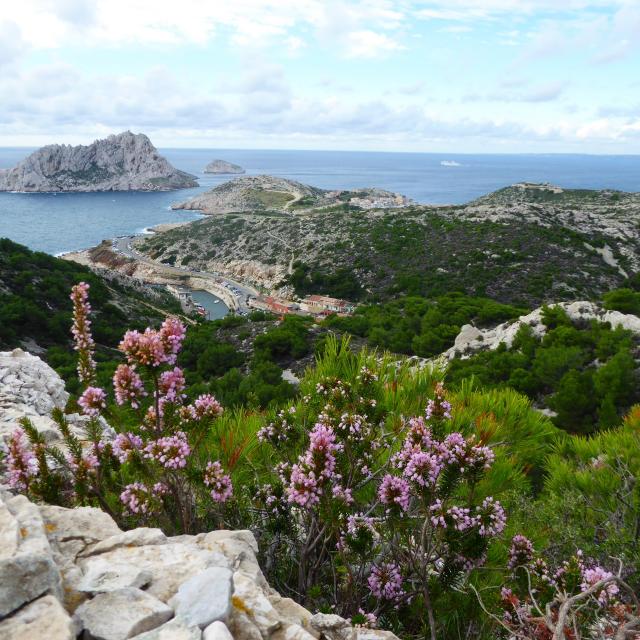Start of the adventure
Arrival at the dive centre
The meeting point for this morning’s snorkelling is the dive centre at Pointe-Rouge at 8.30 am. Some of you may be wondering what snorkelling is, as I was the first time I heard the word. It’s a form of water activity, during which, equipped with a mask, snorkel and flippers, you can admire the surface of the seabed and discover all its curiosities. Once our little group of 7 had arrived at the centre, our guide Didier gave us details of the Calanques national Park and all the islands and places that make it up. Afterwards, Didier gives us more information about our destination for the day, which is chosen according to the weather and wind conditions. Today, our playground will be the Frioul Islands, and more specifically the island of Pomègues.
Let’s get geared up!
Once we’ve been briefed and collected our equipment (wetsuit, fins, mask and snorkel), it’s off to the changing rooms! Putting on the wetsuit is no mean feat, but it’s perhaps the only ‘difficult’ aspect of this activity. Once everyone has been fitted out and our gear stowed in the lockers, we meet up in front of the boats in the Pointe-Rouge harbour: it’s time to board!
